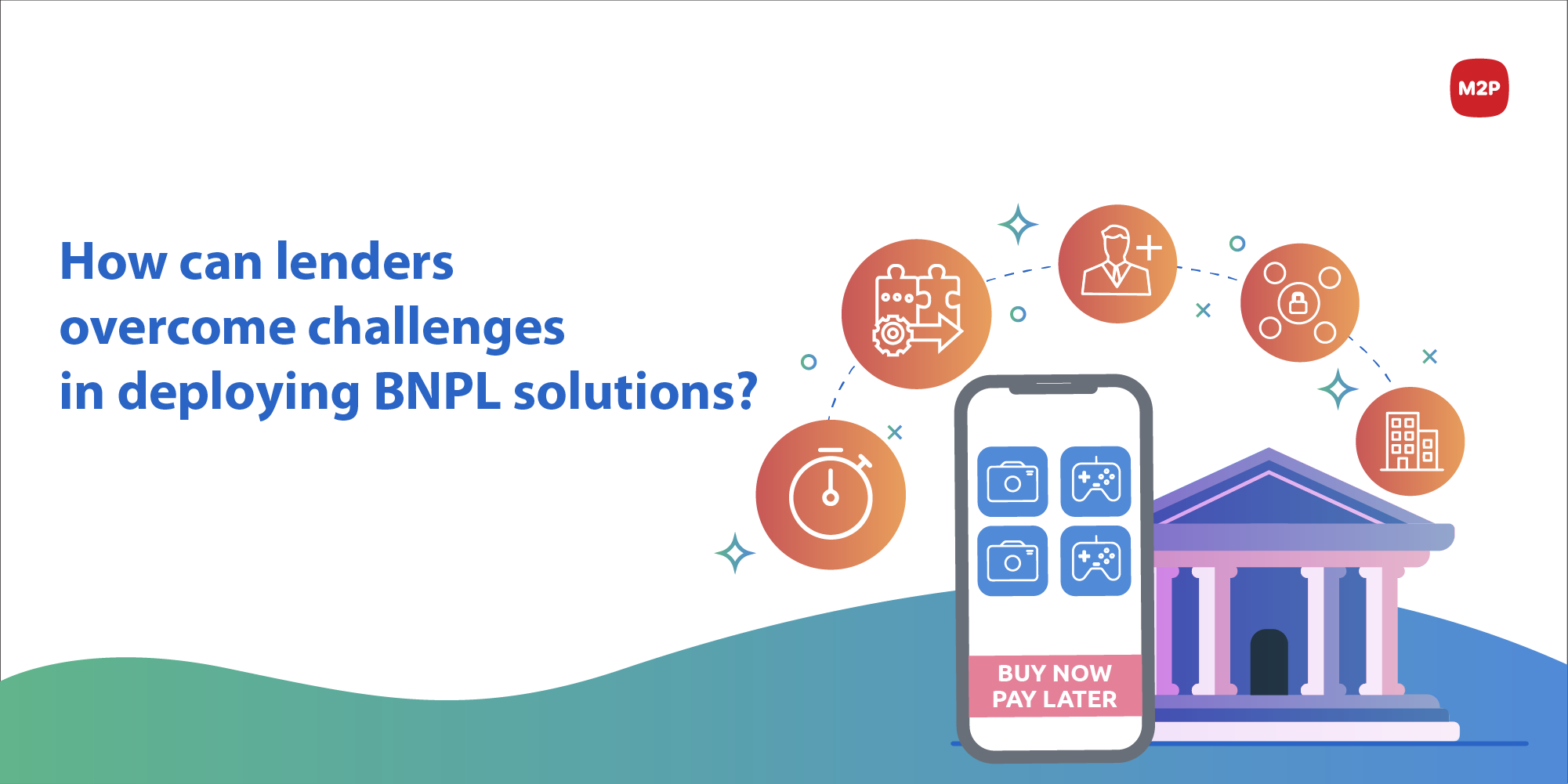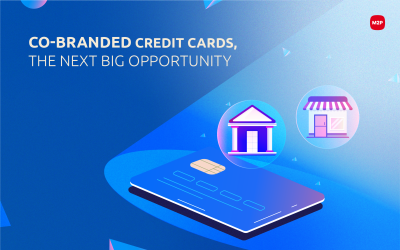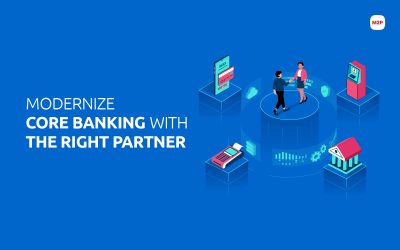
Can you say no to interest-free installments while shopping?
None of us can.
Well, that’s why the Buy Now, Pay Later (BNPL) market has grown by over 600% in the past year alone. It is considered one of the fastest-growing consumer lending modes and a close competitor to credit cards and POS lending.
Currently comprising 2% of total retail Gross Merchandise Value (GMV), BNPL is expected to hit 7% GMV by 2026. Merchants across the retail spectrum are actively leveraging this short-term microcredit phenomenon to increase conversions and Average Order Value (AOV), and lower cart abandonment rate. In India, the BNPL market is expected to experience a 15X leap, from $3 billion in 2021 to about $50 billion by 2026.
Feeding the instant gratification appetite
The buy now and pay later in equal installments is not a new concept to the financial world. But it gathered much steam during the pandemic phase when consumer behavior and priorities gravitated towards safe, quick, and convenient online purchases. BNPL fed their instant gratification and purchase appetite by providing access to quick and easy credit without having to bother about credit history or eligibility score.
Starting from a few thousand rupees to a lakh, the BNPL lending option made 0% APR installments a reality, if repaid between 15 to 90 days (depending on the lender stipulations). The negligible sign-up charges, zero processing & annual maintenance charges made BNPL an attractive proposition for consumers, even though a penalty was charged for late payments.
The hassle-free one-step onboarding process and simple, transparent & interest-free pricing models lowered the pain of spending and increased the joy of shopping. Subsequent covid waves, restricted festivities, and people’s reprisal to reclaim normality added further impetus to the BNPL boom.
Bridging the consumer financing gap
Access to formal credit or consumer lending services is usually a lag in developing economies. In India nearly 93% of the population struggles with credit approval for reasons such as low income and inadequate credit history, to name a few.
BNPL emerges as the game-changer in this space, enabling easy short-term consumer credit with interest-free repayment facilities. It increases the purchasing power and repayment confidence of consumers, enabling greater spending potential. Currently, the number of BNPL users in India is around 10–15 million, and in the next five years, nearly 100 million users are estimated to use BNPL services. Players like Lazy Pay, Simpl, and Zest Money are among the many fintech companies that make this inclusion possible.
To drive further omnichannel BNPL adoption, fintechs like Slice, Uni Cards and LazyPay are launching physical BNPL cards in partnership with leading banks. The BNPL cards offered by these fintech companies are typical Prepaid Payment Instruments (PPIs) with underlying revolving credit.
Lowering CoC through collaboration
The Cost of Credit (CoC) is quite high in BNPL between 2–6 %, but so is the promise of greater sales and increased revenue. Merchants and lenders need to reduce CoC to enhance sustainable profitability.
So, how can CoC be reduced?
Simple. By leveraging collaborative efficiencies in the lending value chain.
Traditional Banks with their large consumer database, trustworthy relationships, and brand equity can deliver low cost of capital when compared to other BNPL providers. And fintechs can hinge on technology innovation, convenience, seamlessness, and consumer-centric attributes to lower the cost of credit. Strategic partnerships between banks and fintech companies leverage the best of both worlds and are critical to lower cost and enhance consumer journey at the point of sale. In fact, a recent survey by MasterCard suggests that 72% of Asian consumers would prefer BNPL services from their banks rather than stand-alone fintechs.
Hence, lenders such as banks and NBFCs need to actively partner with fintechs to integrate BNPL solutions to their existing credit lines and enjoy the below benefits:
- Optimal utilization of credit lines
- Real-time credit issuance
- Scalable, shorter tenure small-ticket financing
- Transactional risk management and default reduction
- Lower cost of issuance and distribution
- Build a funnel for credit card and personal loans
Now, are lenders prepared to handle the projected 15X surge in BNPL demand and transactions?
To answer this question, we need to be cognizant of the challenges the lenders face with BNPL issuance and how they can overcome it.
Challenges banks and NBFCs face in BNPL deployment
Lending institutions like banks and NBFCs face significant challenges when it comes to exploring additional digital lending channels, small-ticket retail lending, and 3rd party merchant integrations. Especially while providing POS lending to New to Bank (NTB) and New to Credit (NTC) consumers.
The existing legacy systems in banks are unable to deliver instant small ticket credit issuance at the merchant checkout. The merchant management interfaces and credit infrastructure are quite complex making dynamic credit limit assessments and underwriting quite challenging.
Assessing the creditworthiness of NTB consumers is difficult as the data available with merchants and 3rd party websites are siloed. This makes it highly challenging for lenders to make real-time decisions. Business Leads, Solution Heads, and Infra Teams are on the lookout for an ideal one-stop BNPL solution that can offer cloud-native, mobile-first infrastructure and seamless integration with multiple merchants and consumer profiles.
Here are the top pain points lenders experience while implementing BNPL. Drawing from our expertise, we provide resolutions to the issues.
Top pain points and resolution
Pain point 1: Slow go-to-market speed and issues with customization
Resolution 1: It takes several months for a traditional lender to scale a fully operational BNPL Platform with capabilities across Pre-Onboarding, Credit Line Issuance, Transaction Lifecycle Management, Post Credit Line Issuance activities, Lender Management, and Merchant Management. Partnering with a BNPL technology provider will enable banks and NBFCs to go to market in the shortest possible time with full-fledged credit offerings and seamless merchant integrations and customizations.
Pain point 2: Complex Merchant Management System and Credit Infrastructure makes it difficult to assess credit limit requirements
Resolution 2: Customization based on consumer buying behavior is critical for merchants. For example, a high-ticket size product retailer of consumer electronics products will have different requirements compared to a low-ticket size retailer of fashion apparel. A comprehensive API infrastructure stack with uniform multi-merchant integration efficiency and the ability to customize credit limits for each merchant will come in handy for this issue. Integrating MPI (Merchant plug-in) between lenders and merchants will be crucial to support current and future scaling plans.
Pain point 3: Inability to integrate with the merchant and consumer database to aid underwriting.
Resolution 3: Typically, lenders have a large consumer database that helps them underwrite credit. But for NTB consumers in the merchant platform, it is difficult to analyze consumer behavior unless there is end-end seamless integration to access real-time data and make instant credit decisions. API stacks that offer complete customized integration with relevant databases of lenders & merchants will help resolve issues in underwriting. This integration enables lenders to analyze consumer shopping history in terms of average order size, cash to cards transaction ratio & duration at the merchant platform for upgrading credit limit.
Paint point 4: Scaling BNPL platform for multiple merchants and high cost of development efforts
Resolution 4: Mushrooming growth of e-commerce companies catering to diverse segments and niche consumers has contributed immensely to lender’s BNPL opportunity. Scaling the platform to include more merchants while keeping development costs under control is imperative for a healthy ecosystem. Leveraging a uniform BNPL API stack with multi-merchant integration capability will offer complete scaling freedom and control to lenders based on their POS credit issuance budget and strategy. By partnering with an end-to-end uniform API stack provider for onboarding merchants and a program-focused pricing model, lenders can easily scale up while controlling cost. This way lender partners can have total control over the number of merchants they wish to onboard on their platform.
Pain point 5: Security and compliance checks for merchants and lender integration
Resolution 5: BNPL Platforms need to adhere to the financial industry’s latest security and data privacy standards and PCI-DSS compliance. In the case of physical card issuance, tokenization and Anti-Money Laundering (AML) fraud checks should be done in real-time for each transaction. The complete infrastructure should be hosted on a secure data center with 24/7 availability. In case lenders do not have compliance infrastructure, they can partner with API providers who have a compliance armor ready in the form of widgets.
Pain point 6: Niche skills and resources required to build integrations across merchants
Resolution 6: Building a full-fledged BNPL platform from scratch requires a lot of resources, Capex, and fintech expertise. Build Vs Buy decision plays a critical role in the successful implementation of BNPL.
Choosing the buy decision and partnering with an experienced API provider like M2P will help ease the process of creating, running, scaling the BNPL platform. This way banks, NBFCs, and fintech firms can focus on core business and leave the issuance and program management part to the experts. With proven experience of enabling lender credit lines with multiple merchants integrations, experts like us can deliver seamless One-click BNPL Checkouts in the quickest time possible.
How do we help lenders overcome BNPL challenges?
Working with leading banks across India, we help new-age lenders and traditional banks launch BNPL over its cloud-native, mobile-first BNPL platform which is specifically designed to address their challenges. The BNPL API stack used is customizable and scalable according to the growing needs of lenders, merchants, and consumers. We help lenders go to market with one-click BNPL checkouts, card issuance, and seamless integrations 5x faster.
M2P’s BNPL platform serves as a one-stop solution with multi-module expertise and capability to manage onboarding, credit line issuance, lender management, collection, reporting, and reconciliation. Our full stack Lender Management System helps manage loan lifecycles across different merchants and platforms. Customization is prioritized as per the value chain requirements such as credit limit criteria, KYC, multi-channel distribution such as physical/virtual card, UPI, wallets, NFC, and direct integrations with merchants, repayment options, and rewards/cashback, among many other data points.
The right time to deploy BNPL
BNPL is a promising trend in the global financial system which resonates well with the ever-increasing digitalization phenomenon. It has reached an inflection point, with big fintech players streamlining their business models and focusing on mergers & acquisitions.
Now is the best time for lenders to take the lead in overcoming pain points and turning their business objectives into reality.
Want to know more about deploying BNPL solutions?
Write to us at business@m2pfintech.com. We’ll be glad to help.
Subscribe to our newsletter and get the latest fintech news, views, and insights, directly to your inbox.
Follow us on LinkedIn and Twitter for insightful fintech tales curated for curious minds like you.




0 Comments